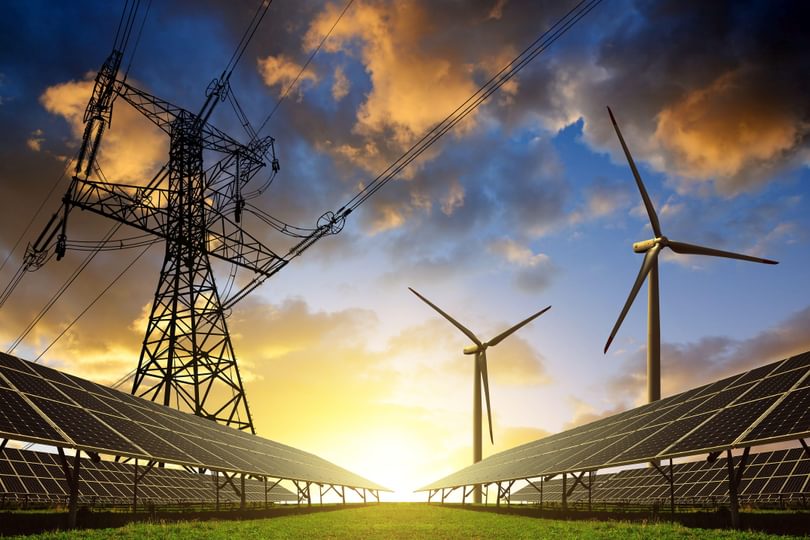
Globally there is a need to rapidly decarbonise energy systems to meet the goals of the Paris Agreement. Early decarbonisation of the electricity sector is crucial, and variable renewables – in particular wind and solar - are anticipated to be major players. While the abundant nature and declining costs associated with these resources make them very attractive, they are not without their challenges. Most (if not all) power systems around the world have been built up around centrally located fossil power plants. But wind and solar are more geographically dispersed, and often feed into distribution (rather than transmission) networks. They also generate power according to local weather patterns, rather than to meet a pre-determined demand pattern. Both these factors mean that there is a mismatch between supply and demand.
Technologies that can balance supply and demand by moving energy across time and space are going to become increasingly important to help integrate renewable energy and deliver on our decarbonisation goals. In electricity systems this balancing role has typically been provided by transmission and distribution networks (moving energy across space) and more recently by battery storage (moving energy in time). But as heat and transport systems decarbonise, often through electrification, there is a need to also address new issues relating to grid capacity and inter-seasonal storage. Our current solutions will only take us so far. If we’re really serious about decarbonisation, then we need to fully embrace a multi-vector approach, incorporating power, heat and transport.
This was one of the many topics discussed at the recent Future of Electricity conference, hosted by the Oxford Martin Programme on Integrating Renewable Energy. The event saw leading academics from across the globe come together to discuss issues impacting and arising from our energy transition toward increasingly decarbonised, decentralised, and digitised electricity systems.
Cedric Philibert from the International Energy Agency gave an illuminating presentation in which he discussed the need to think across energy vectors in the context of decarbonising some of the tougher industrial sectors. While there’s no doubt that the future is electrifying with renewables playing a dominant role, other energy vectors may have a role to play in supporting the time and space mismatch between generation potential and demand.

Cedric Philibert from the IEA presenting on anticipated electricity growth
He explained how the capacity factors of wind and solar were so high in vast areas, though these tended to be remote from large consumption centres. And while large scale transmission could help bring remote recourses onto the grid, excess electricity could – for example - be used to produce hydrogen or ammonia. This could then be used directly in transportation, industry, and buildings, as well as in balancing power plants.
However, even with low cost renewables, it’s still likely to be more expensive to create synthetic fuels than use fossils, which suggests the need for policy support through carbon pricing, support for innovation, or the bulk procurement of materials to help jump start deployment. In addition, the spatial dependency of renewable resources means that some locations will offer renewable power far cheaper than others, and the global imperative to decarbonise beyond the power sector could require a new era of international collaboration.
Thinking across different energy vectors and geographies really emphasises the emerging need co-ordinate across sectors and silos to better understand and deliver an energy transition. And the shift from an energy system centred around power stations and supply to one centred around end users and demand means we need to simultaneously think about transmission and storage, operation and investment, behaviour and technology, and regulation and governance. This calls for an end-to-end whole system perspective of the energy system, and this is something that no single discipline or sector can manage alone.
But, we have built our learning around silos, and nowhere more so than in academia. Now don’t get me wrong - I’m not suggesting we lose all our subject matter experts in favour of generalists, and I recognise that some complexities require a highly nuanced understanding of the issue. However, we need to get better at talking to one another and talking to policy makers.
If I may borrow from uncle Ben for just a moment, I do believe that “with great power comes great responsibility”. As academics, we have been privileged with a superior education, and now it is our turn to give back. We need to do a better job at emphasising the importance of real world impact, and to make sure to keep focussing on the “so what” as well as the “what”. We need to engage with policy makers early and often, and make sure that these all important learnings don’t just end up in a dusty academic journal, but rather can support the all-important goal of a global transition to a low carbon and equitable future.
This opinion piece reflects the views of the author, and does not necessarily reflect the position of the Oxford Martin School or the University of Oxford. Any errors or omissions are those of the author.